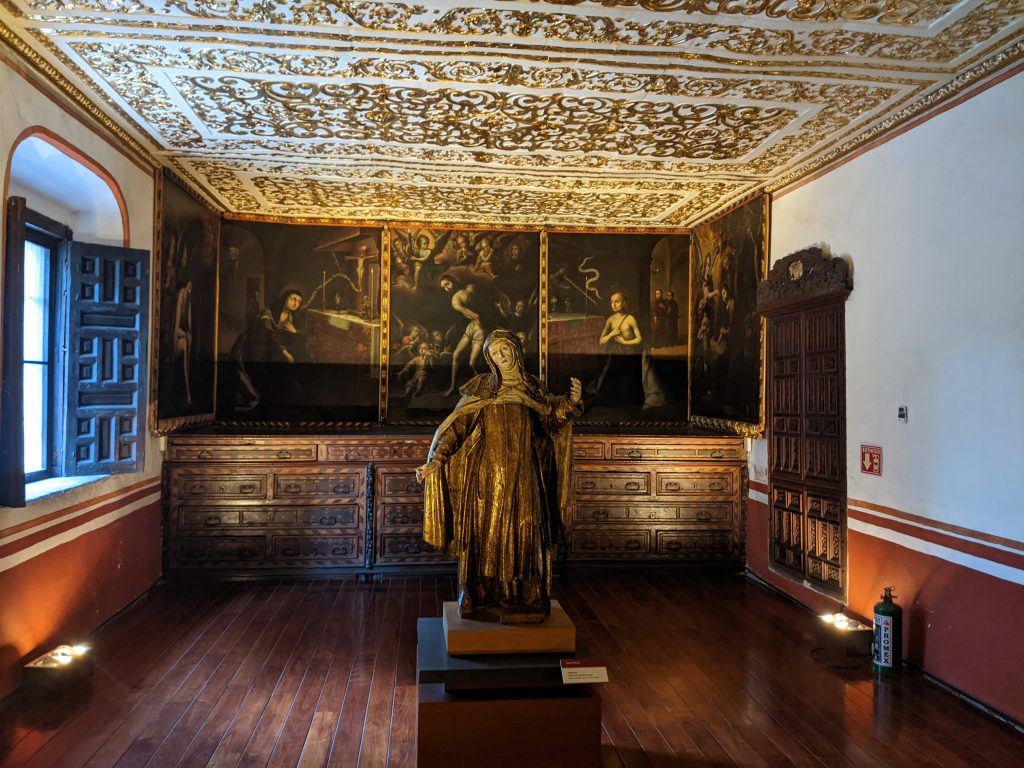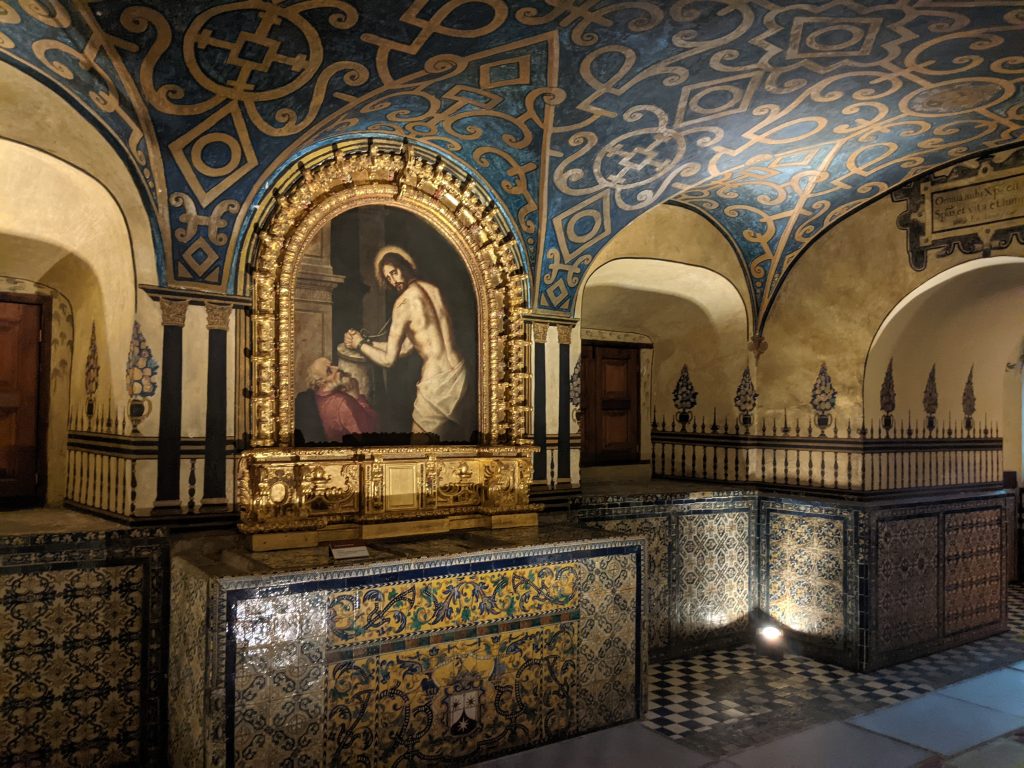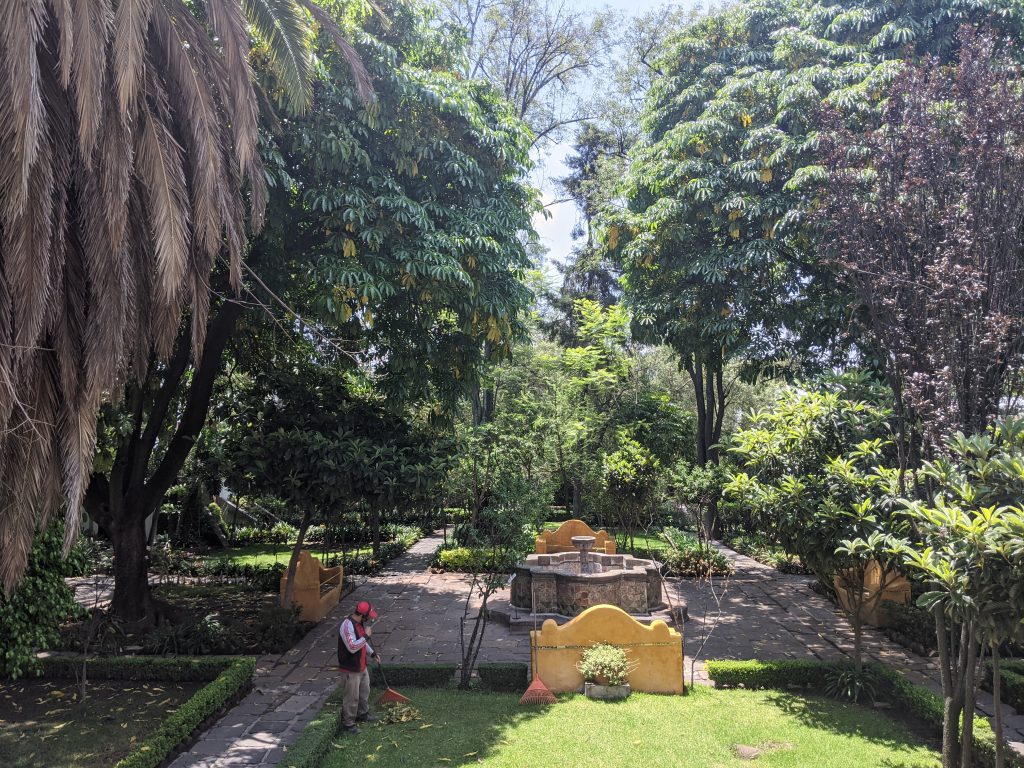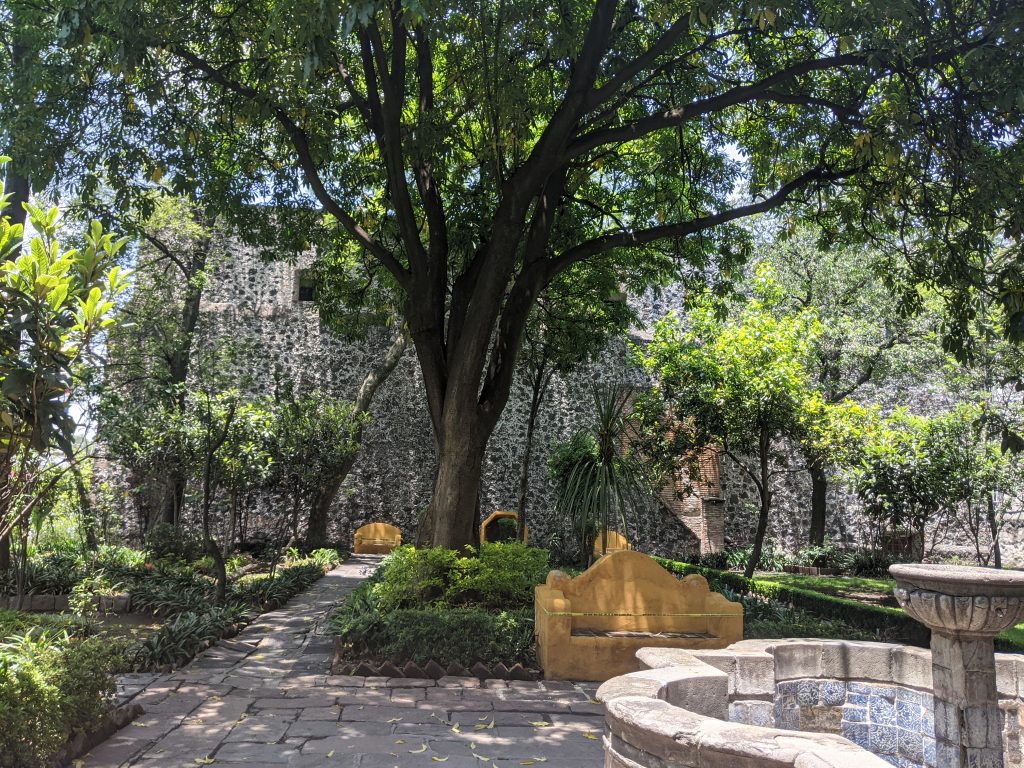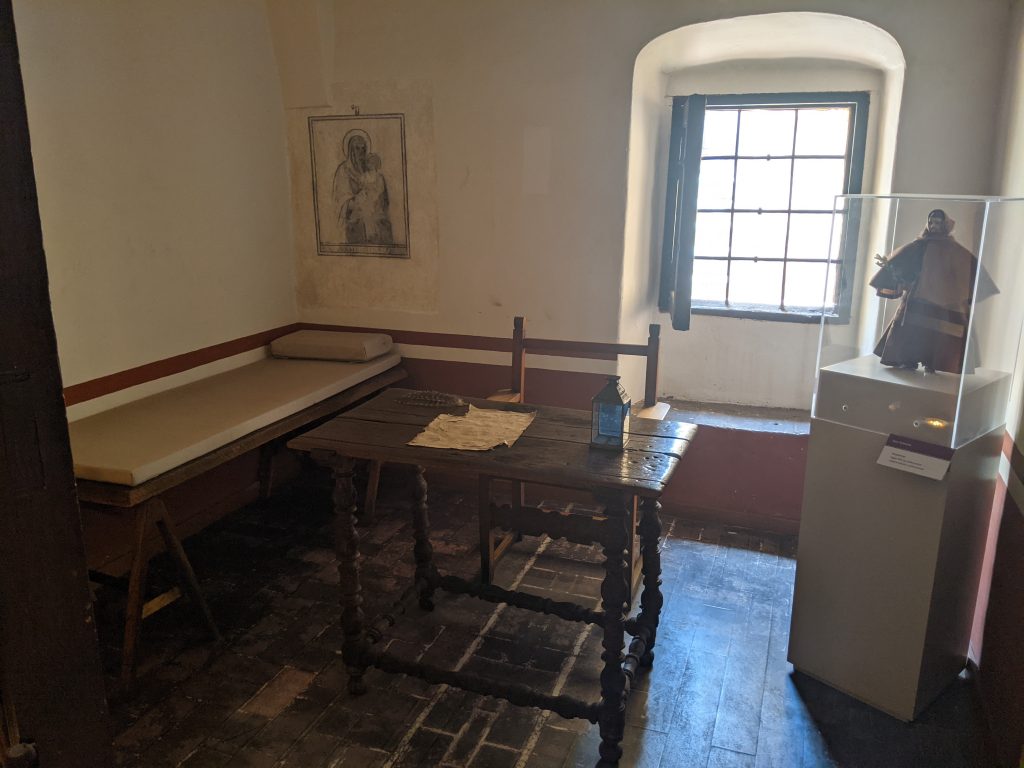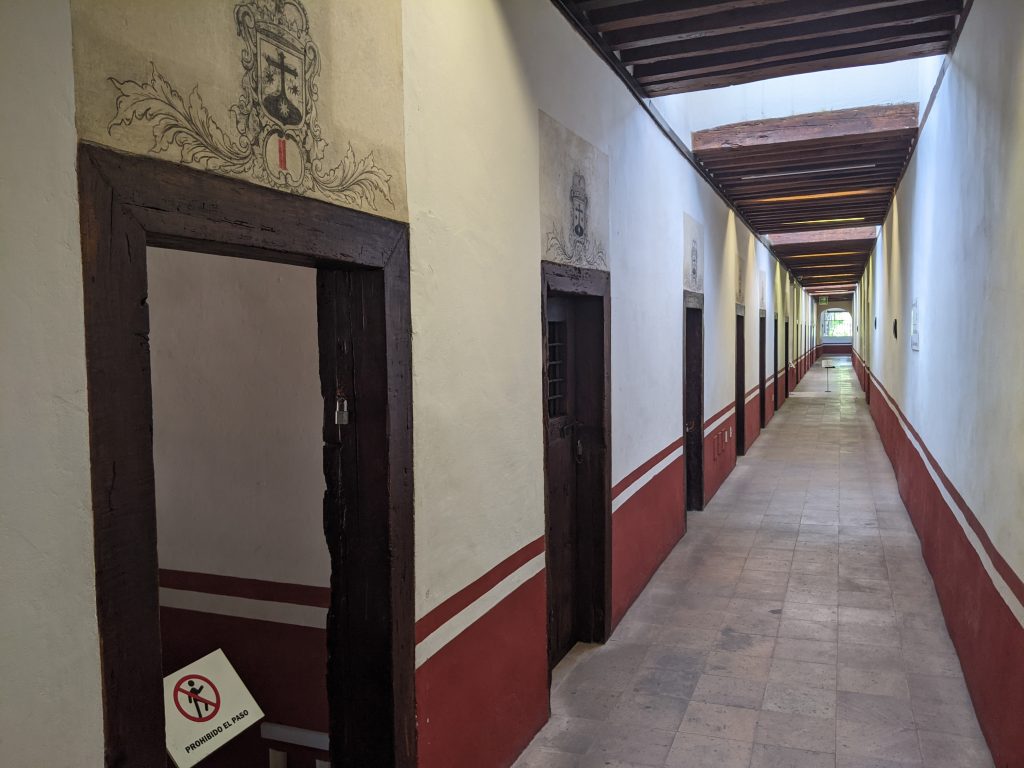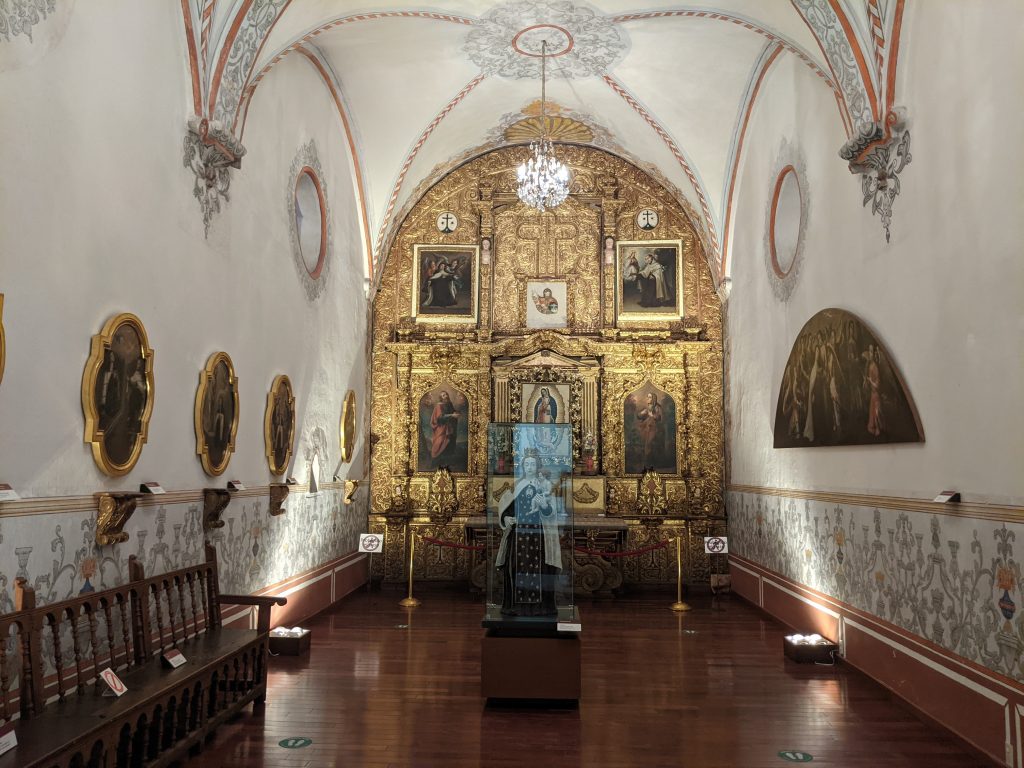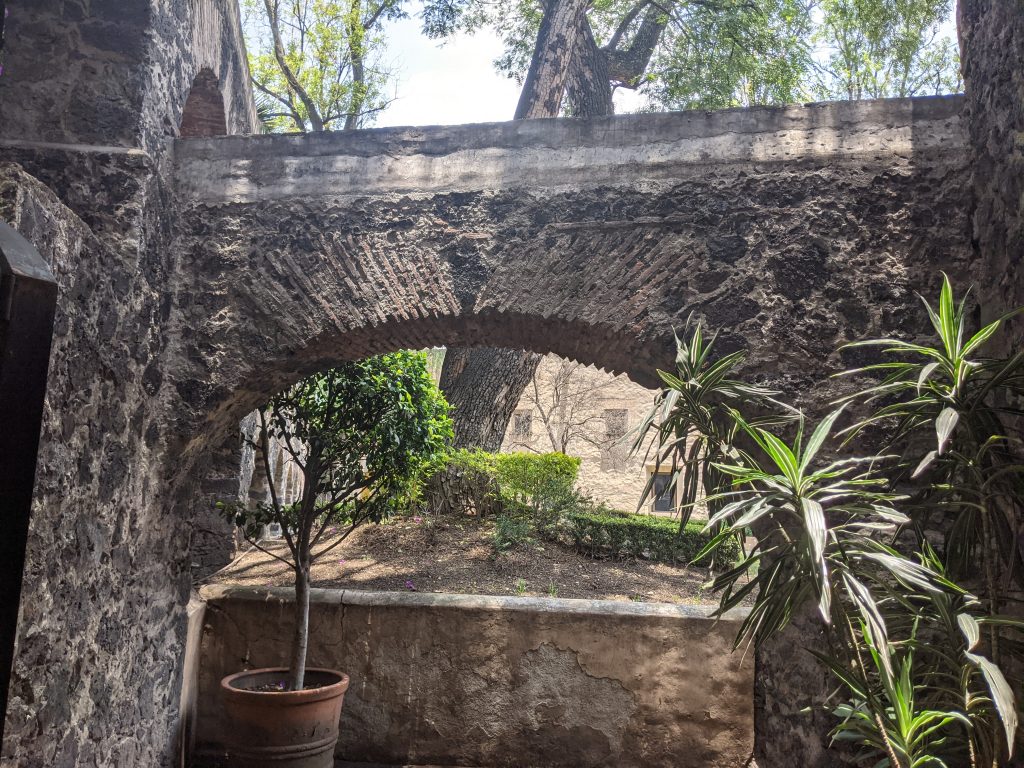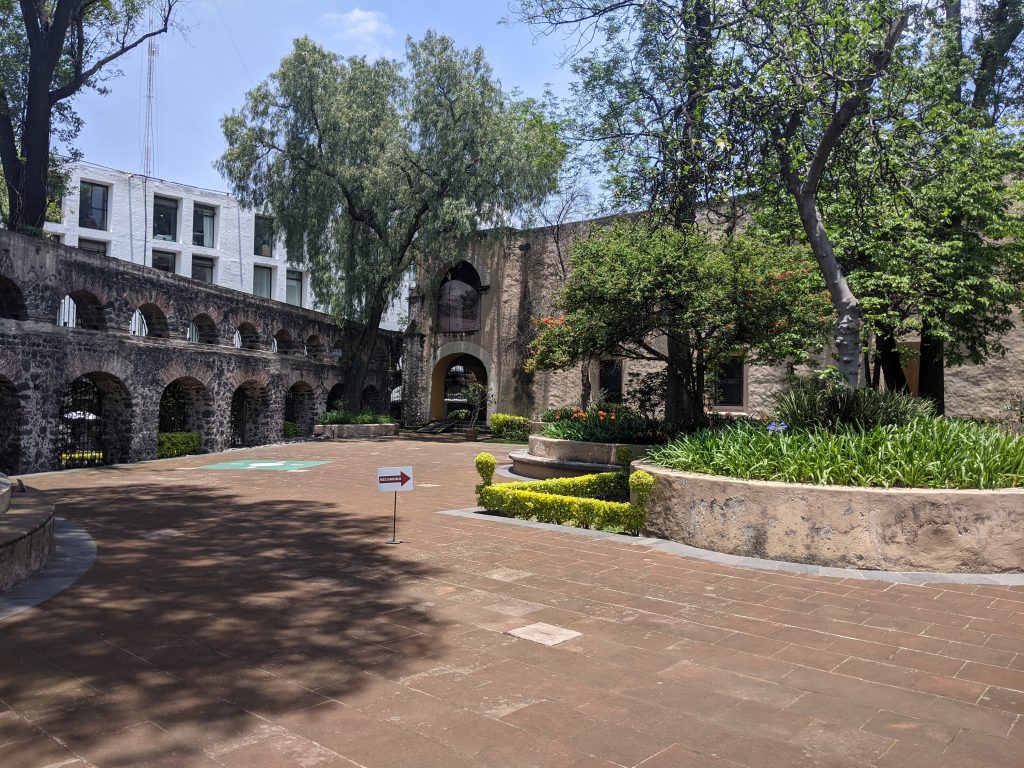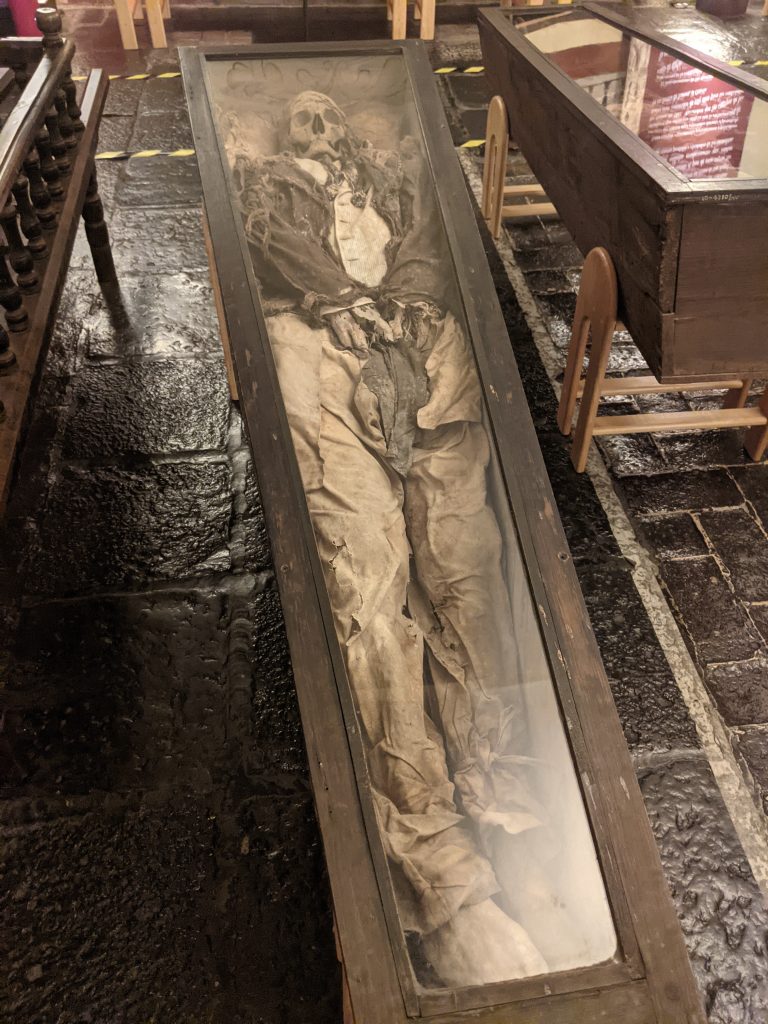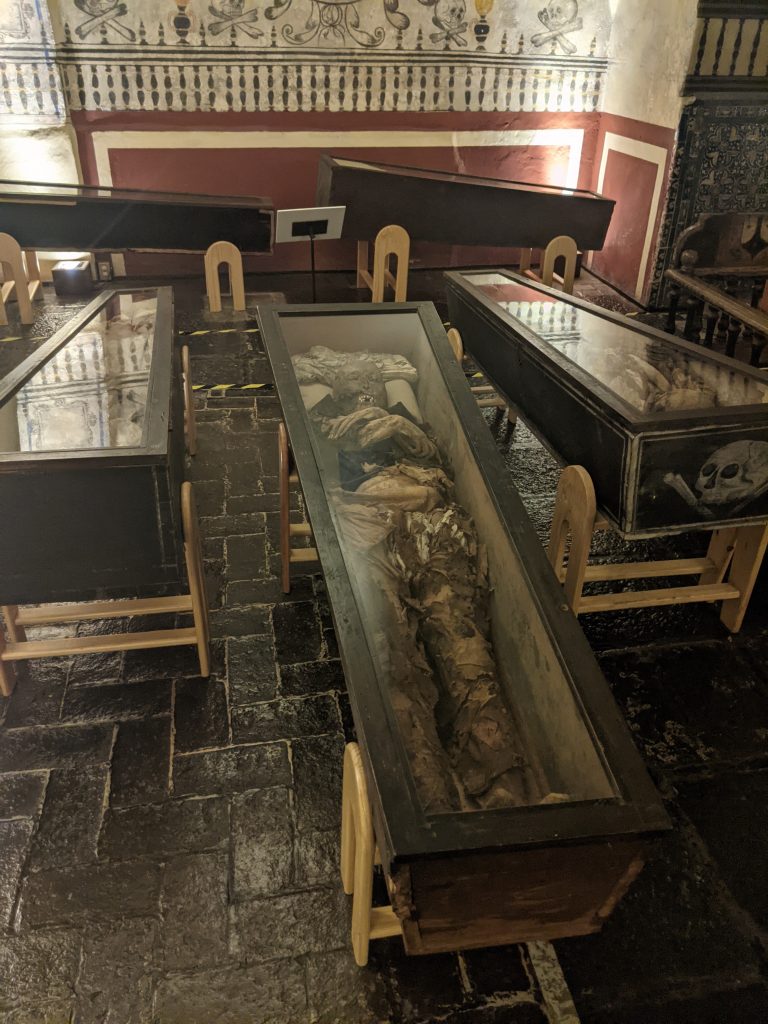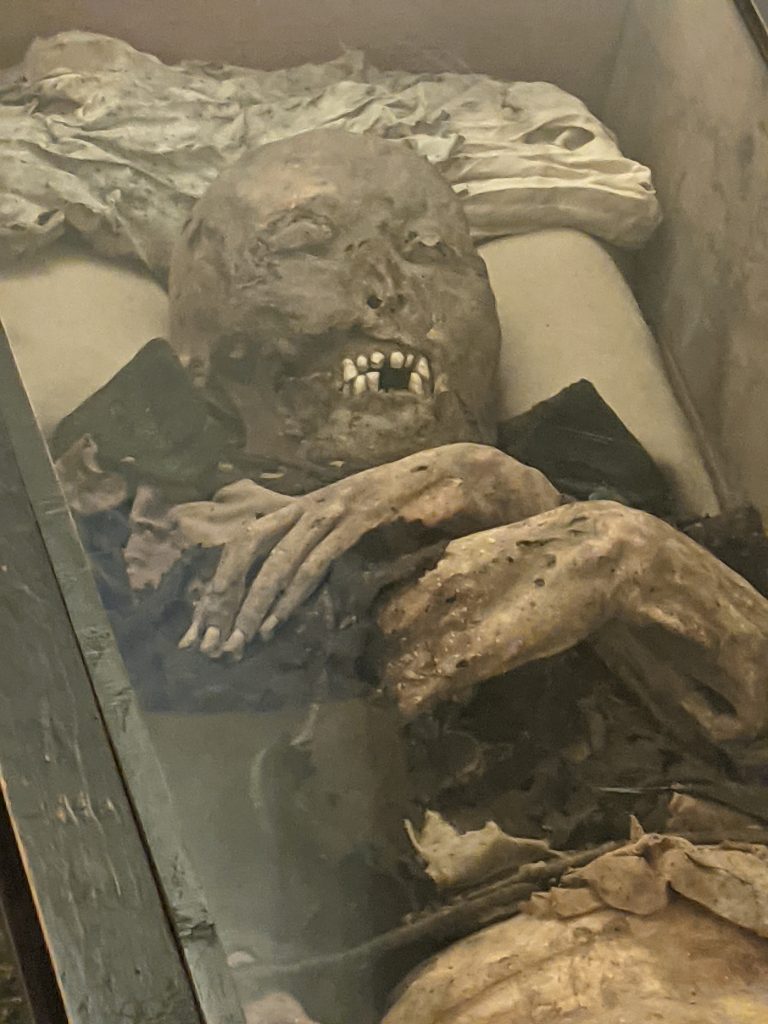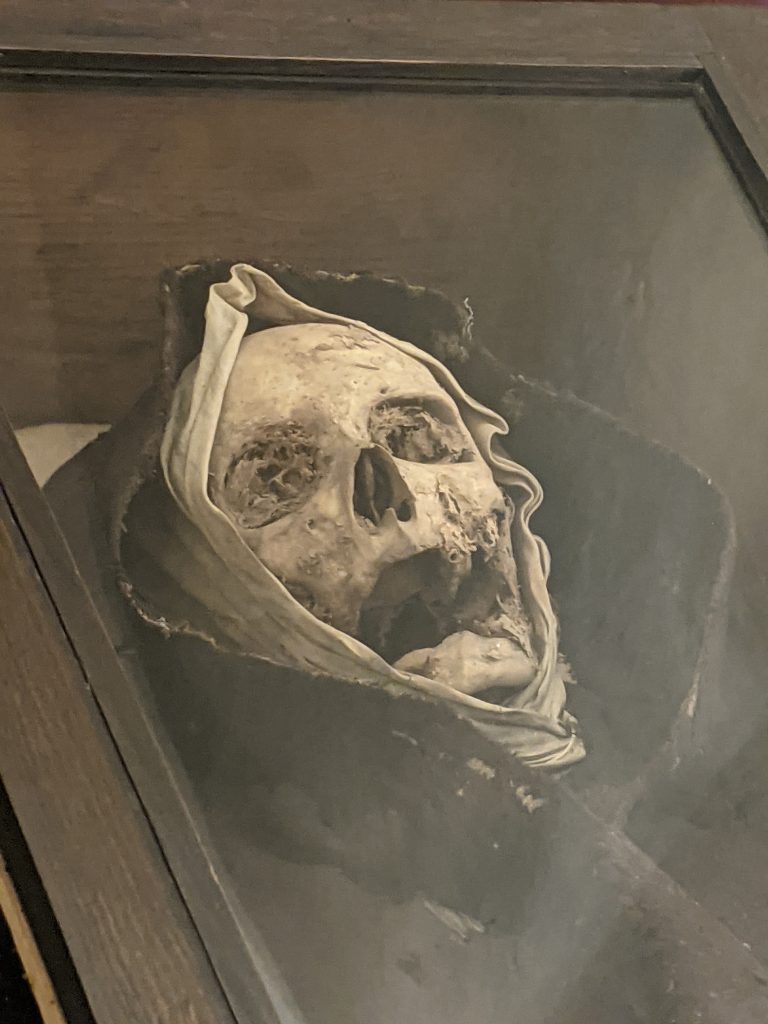San Angel and Coyoacan are two old colonial towns that have been completely absorbed by Mexico City. They are both very tranquil places and the walk between them is a peaceful hour or so stroll with old walled residences and small shops and restaurants. I was going to just include some of these pictures in the general Mexico City post, but then I stumbled into the fascinating Museo del Carmen in San Angel, which I’ll describe below.
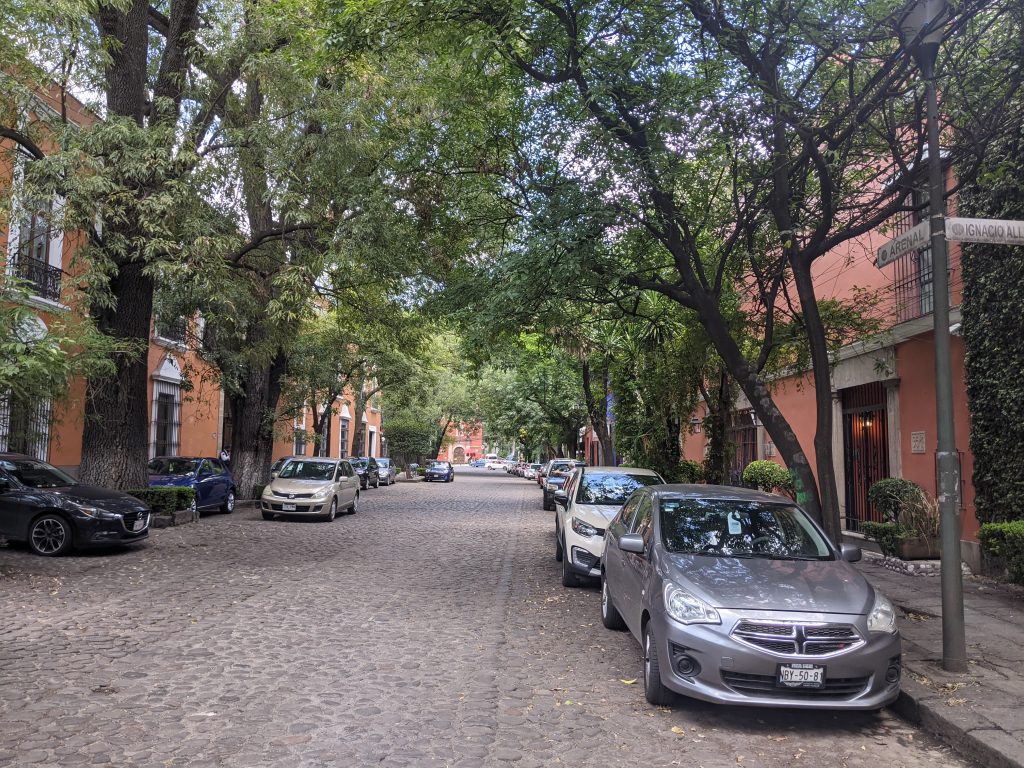
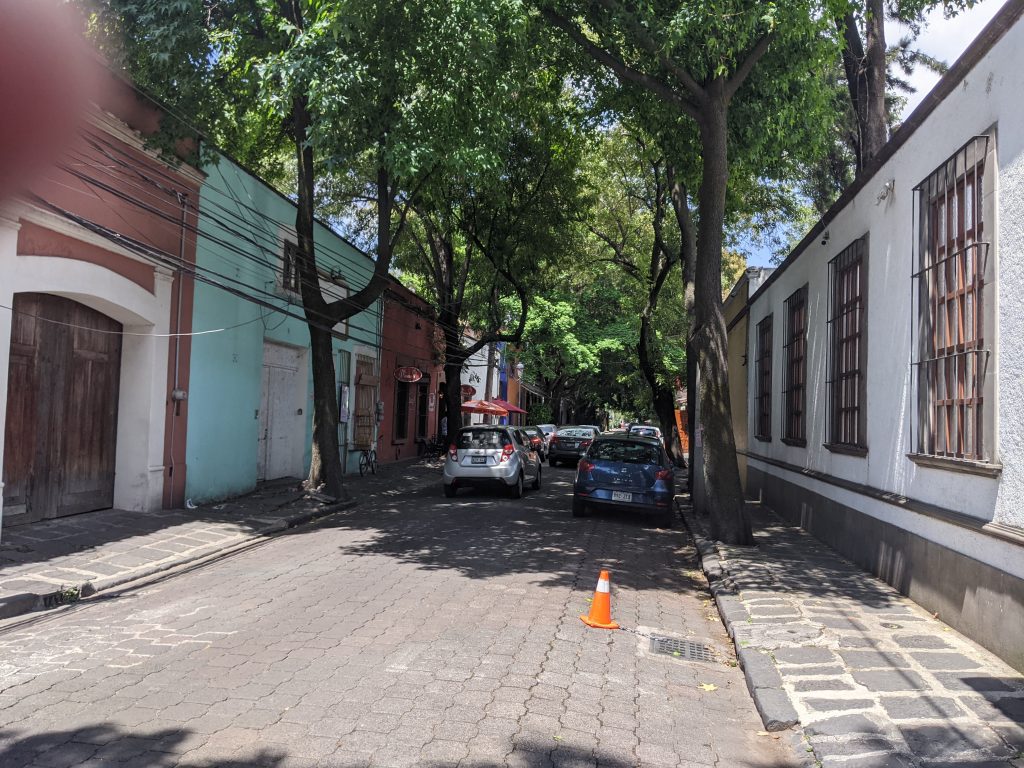
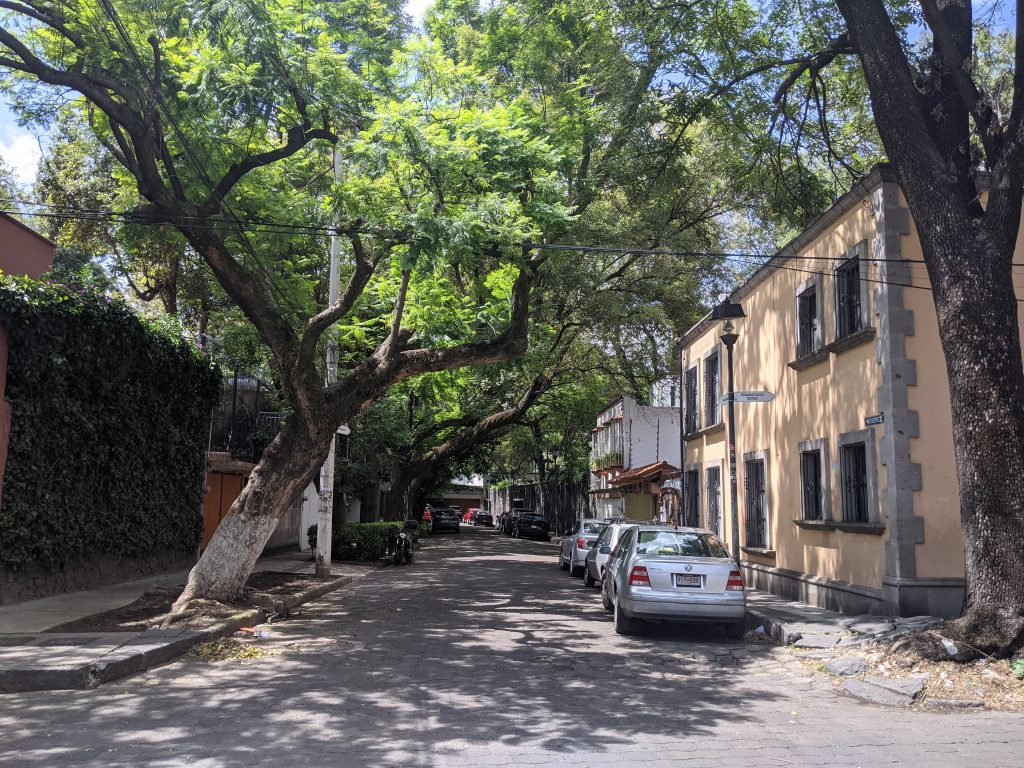
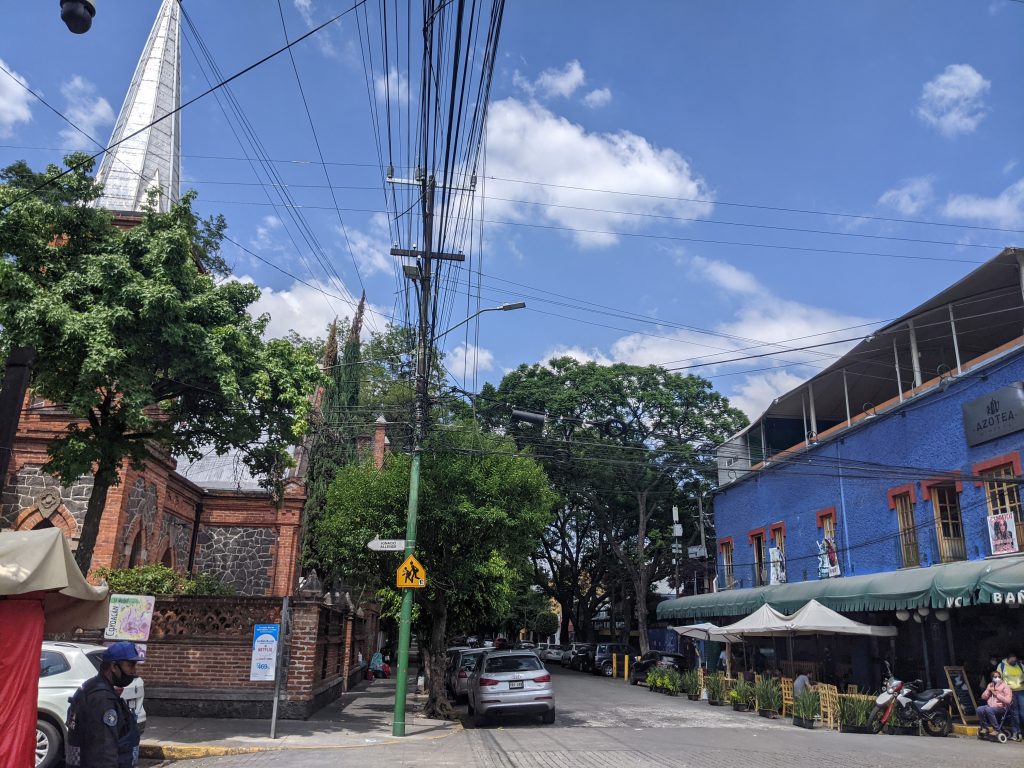
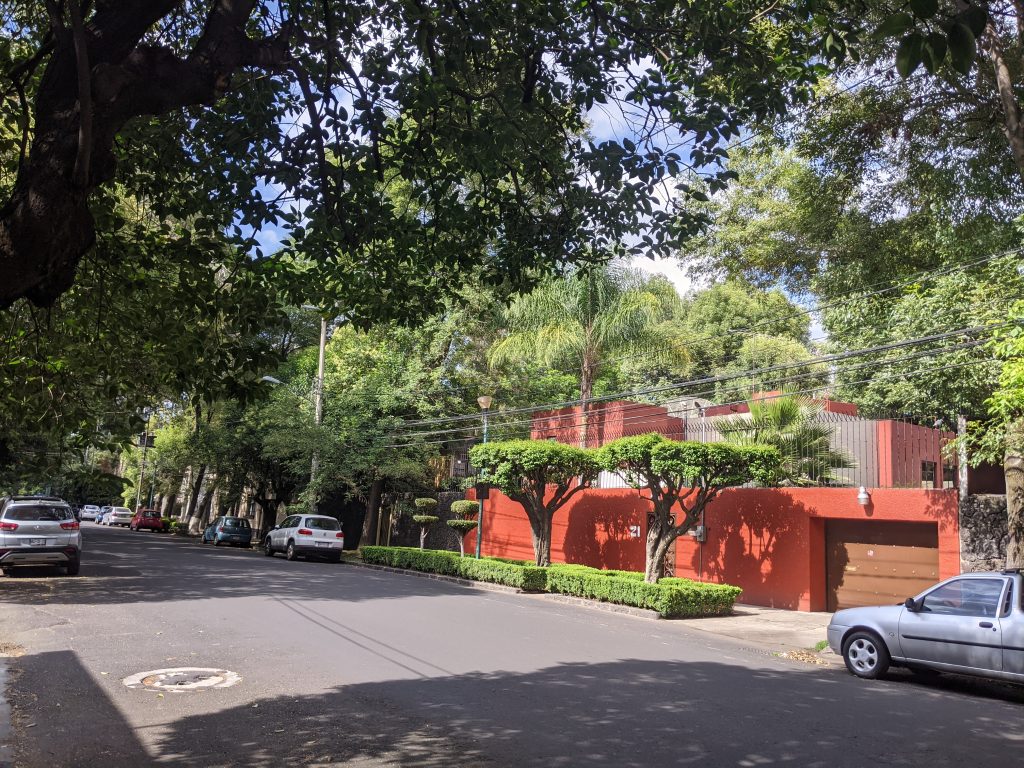
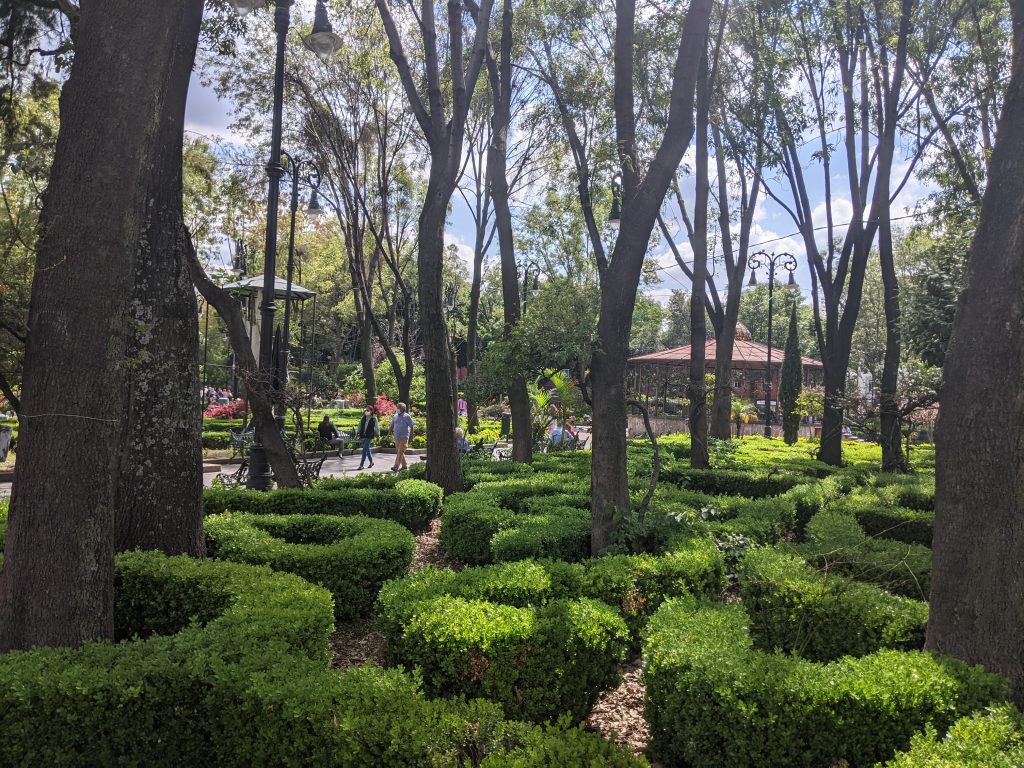
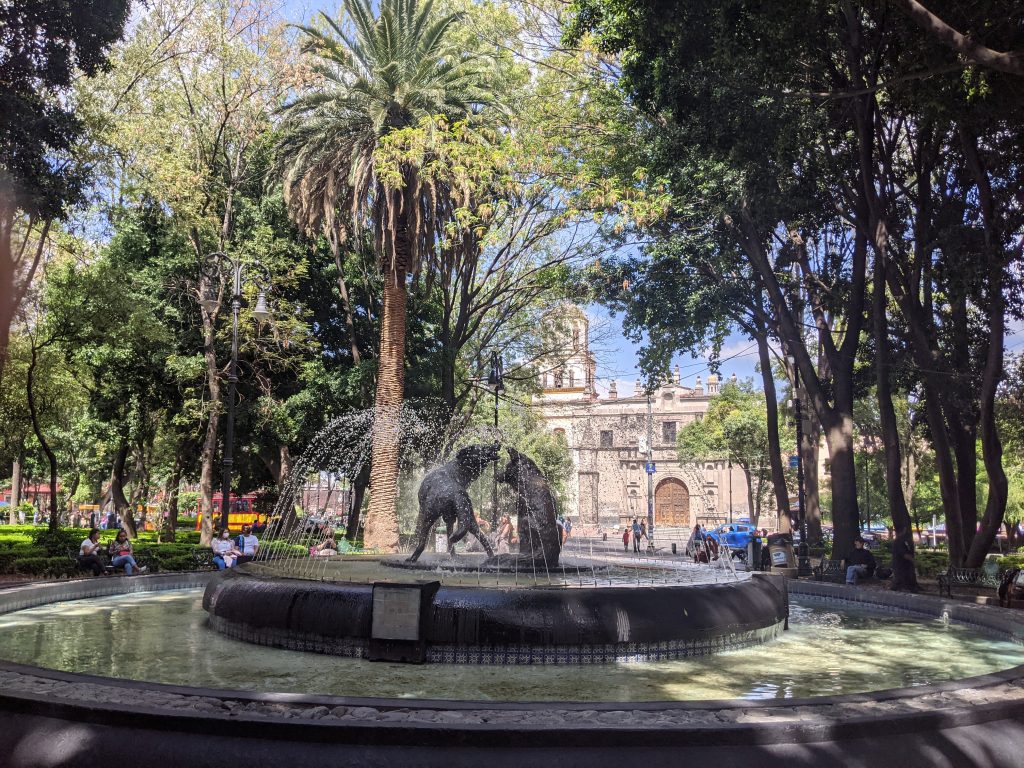
Frida Kahlo Museum
I visited the Blue House, the nickname for the Frida Kahlo Museum, which is also in Coyoacan. Frida is considered to be the most famous and successful Latin American female artist. The Blue House is the home she grew up in and then lived with her famous Mexican artist husband Diego Rivera (whose amazing murals are in some of the pictures above from the Bellas Artes building). There were some nice paintings in the museum, but what I found most interesting was how beautiful the house and the gardens were. The museum was expensive and they then charged an extra fee to take photos, so the first photo below is mine and the rest are ones I pulled from the Internet.
The outside of the house with people waiting in line to enter.
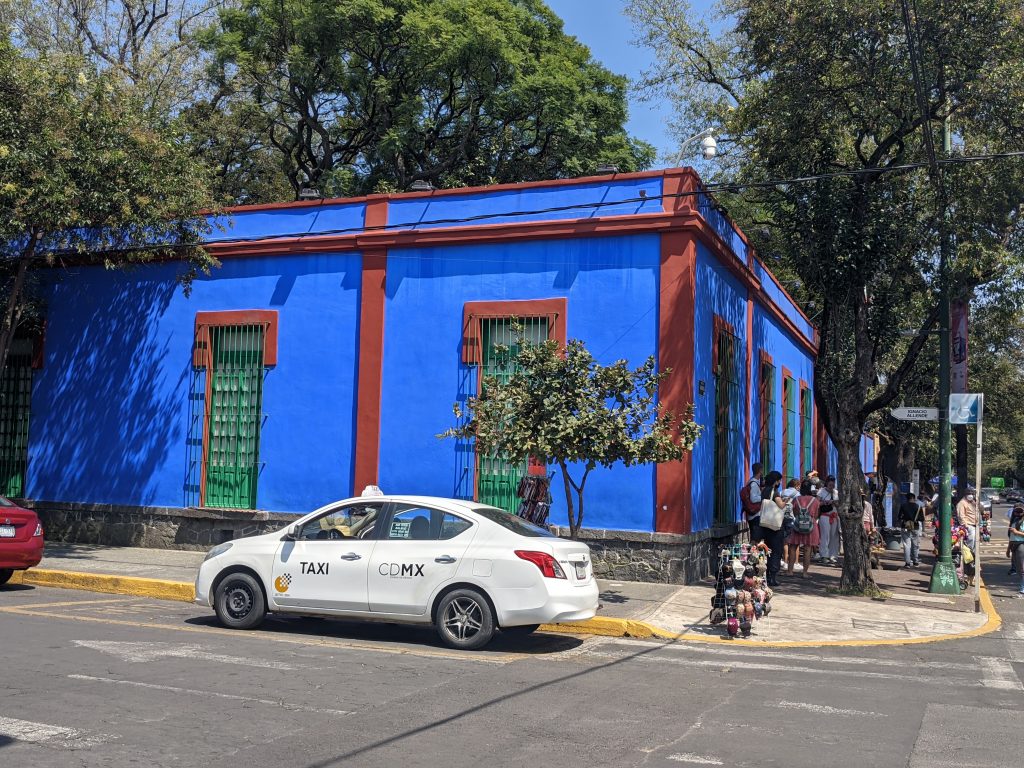
The central garden area.
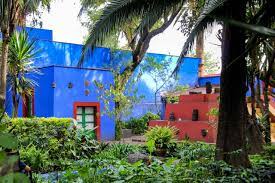
Another view of the central garden area.

The back portion of the house.

Frida’s main studio.
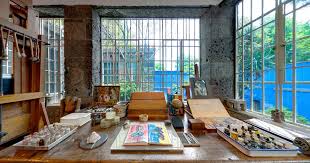
Museo del Carmen
The Museo del Carmen is a former monastery from the early 17th century. It’s a nice pious place with monks cells, a beautiful small chapel, a peaceful garden and some other rooms with wonderful decorations. Then you head down into the basement where there are a dozen ghoulish mummies found by Mexican troops during the revolutionary war. They are thought to be 18th century nuns and monks. As you can see from the pictures, it’s quite a contrast from the rest of the monastery.
